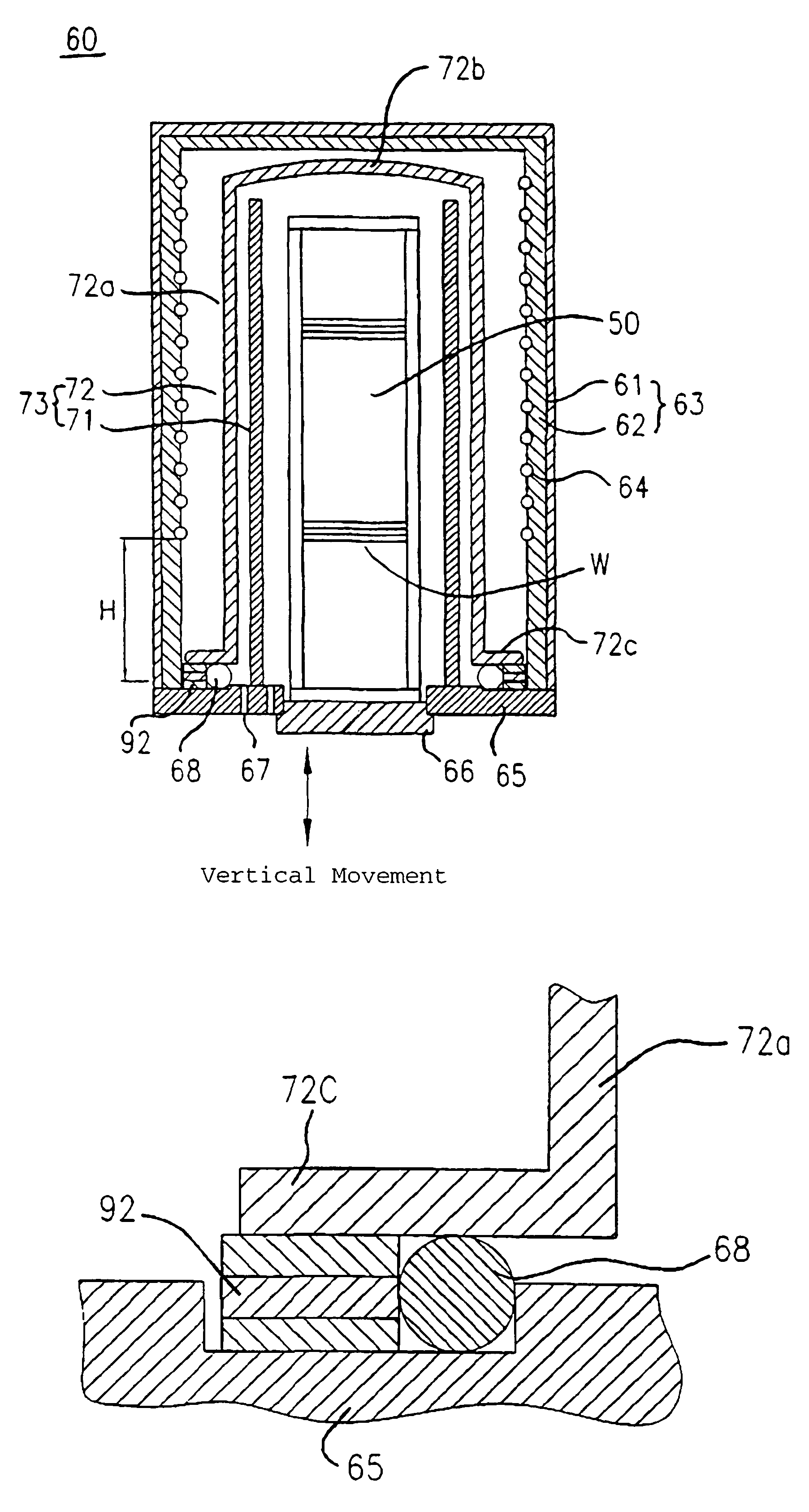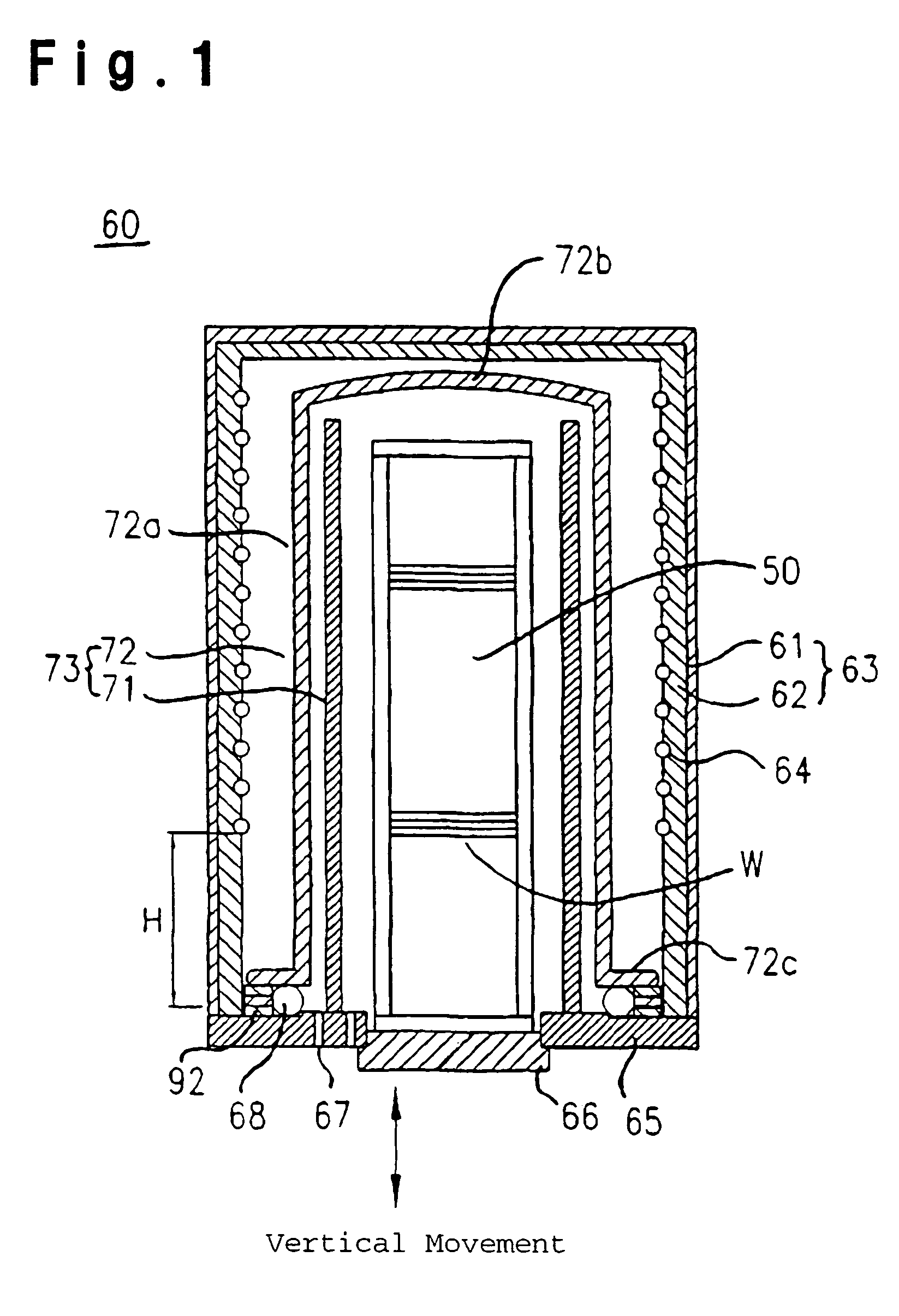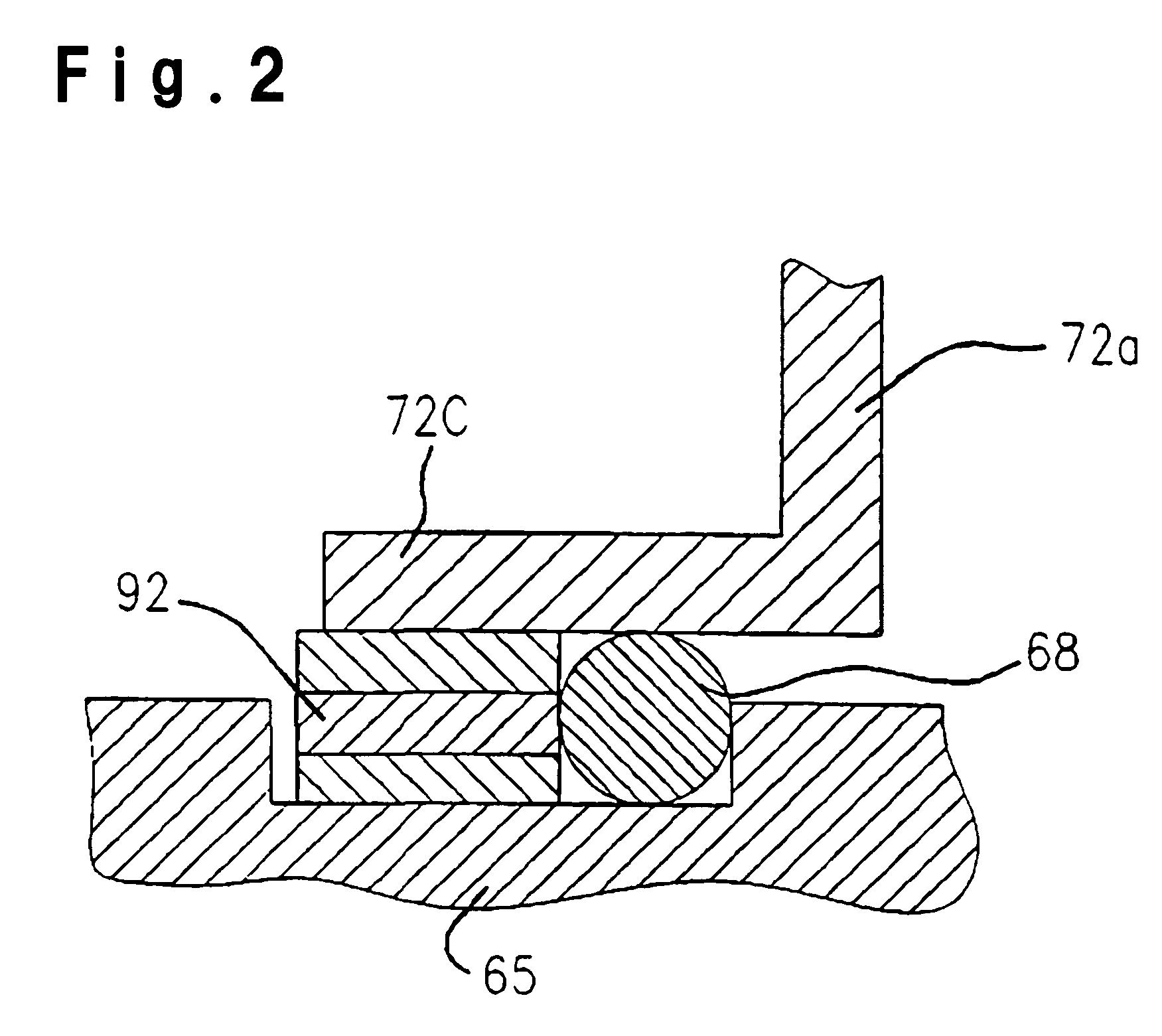Thermal treatment system for semiconductors
- Summary
- Abstract
- Description
- Claims
- Application Information
AI Technical Summary
Benefits of technology
Problems solved by technology
Method used
Image
Examples
example 1
[0040]A low pressure CVD system, which included an inner tube 71 having an inner diameter of 270 mm, a thickness of 2.5 mm and a height of 1,200 mm and made of silicon carbide containing 5 mass ppm of Fe as an impurity, and an outer tube 72 having an inner diameter of 307 mm, a thickness of 4.5 mm, a height of 1,400 mm, a flange inner diameter of 307 mm, a flange outer diameter of 400 mm and a flange thickness of 10 mm and made of silicon carbide containing 5 mass ppm of Fe as an impurity, and which was formed as shown in FIG. 1, was used.
[0041]Between the outer tube 71 and a base 65, an O-ring made of vinylidene fluoride rubber (JIS B2401, Bearing Number V335) was interposed as a sealing member 68. The supporting member interposed between the outer tube and the base outside the O-ring 68 had an outer diameter of 410 mm, an inner diameter of 350 mm and a height of about 4 mm and was formed in a five-layered structure wherein members made of Al and members made of porous PTFE were co...
example 2
[0043]In the low pressure CVD system of Example 1, the same configuration was adopted except that the supporting member 92 used in the system was formed so as to have members having a thickness of 3 mm and made of Al and members having a thickness of 1 mm and made of PTFE layered in a height direction as shown in FIG. 3(a). Although the low pressure CVD system thus configured was used to repeatedly deposit of CVD films 40 times as in Example 1, no defect, such as a crack, was not observed in the outer ring 72 and the O-ring 68. The sealing ability was sufficiently maintained, and the degree of vacuum in the dual tube 73 was in a required range. Although the low pressure CVD system thus configured was used to repeat deposition of CVD films made of silicon nitride 40 times at a higher temperature of 750° C., no problem occurred. The supporting member 92 had an elastic modulus of 1.9 GPa and an effective heat transfer coefficient of 222 W / (m2·K).
example 3
[0044]In the low pressure CVD system of Example 1, the same configuration was used except that the supporting member 92 was not interposed and that only the O-ring 68 was interposed. When the low pressure CVD system thus configured was used to repeat the deposition operation of CVD films stated in Example 1 twice, the deposition operation was stopped since a crack was found in a lower portion of a peripheral wall 72a of the outer tube 72. When the system was disassembled for inspection, it was revealed that the O-ring 68 was partly seized.
[0045]In accordance with the system according to the present invention, it is possible to absorb a thermal stress caused in the outer tube during thermal treatment by using a supporting member having a specific effective heat transfer coefficient in combination with the sealing member. Accordingly, it is possible to increase the degree of freedom in designing of the outer tube since the limitation to the shape of the outer tube can be minimized, an...
PUM
| Property | Measurement | Unit |
|---|---|---|
| Power | aaaaa | aaaaa |
| Power | aaaaa | aaaaa |
| Heat transfer coefficient | aaaaa | aaaaa |
Abstract
Description
Claims
Application Information
 Login to View More
Login to View More - Generate Ideas
- Intellectual Property
- Life Sciences
- Materials
- Tech Scout
- Unparalleled Data Quality
- Higher Quality Content
- 60% Fewer Hallucinations
Browse by: Latest US Patents, China's latest patents, Technical Efficacy Thesaurus, Application Domain, Technology Topic, Popular Technical Reports.
© 2025 PatSnap. All rights reserved.Legal|Privacy policy|Modern Slavery Act Transparency Statement|Sitemap|About US| Contact US: help@patsnap.com



